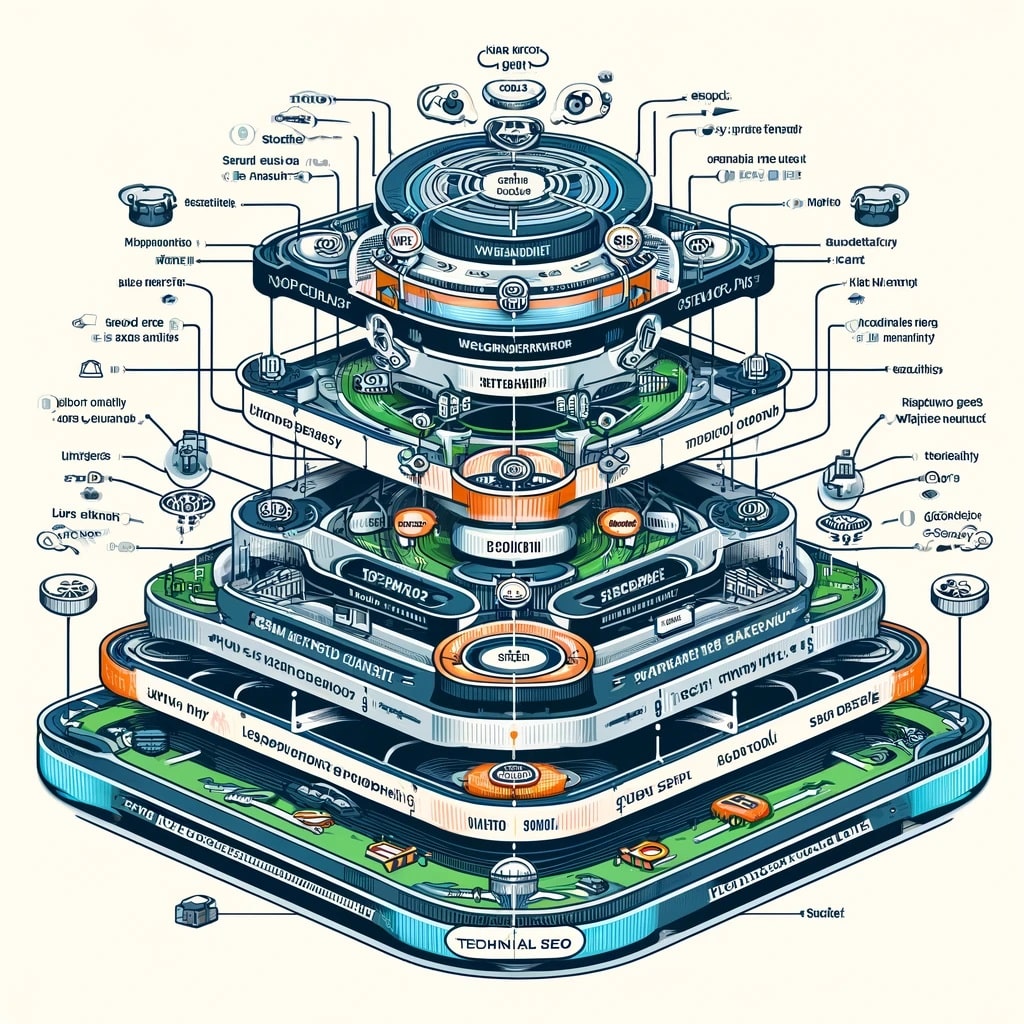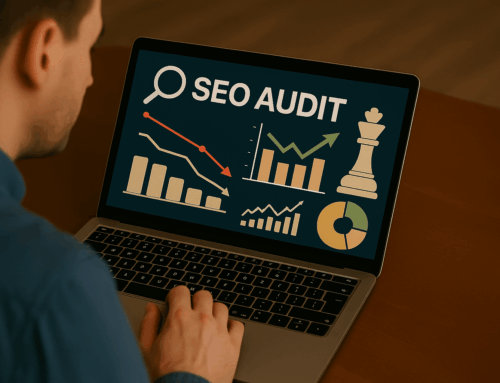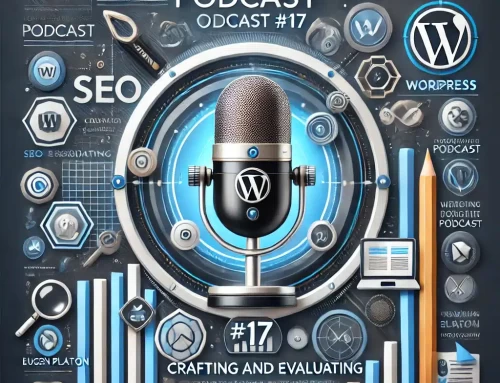What is the purpose of a hierarchical website structure, and why should you care?
In today’s digital world, every entrepreneur or small business owner understands the importance of creating a strong online presence. But how can you make your website stand out despite the severe competition? The solution is in optimizing your SEO using a structured hierarchical structure. This strategy not only improves your website’s search engine results but also improves user experience, resulting in increased engagement and conversion rates.
How Can a Hierarchical Structure Improve Your SEO Campaigns?
A well-planned hierarchical structure is the foundation of successful SEO. It entails arranging your website’s information in a logical and straightforward manner that both people and search engines can readily browse. Here’s how it can improve your SEO strategy:
Prioritize Content Effectively
Prioritizing your content ensures that the most crucial pages receive the greatest visibility. This method entails moving your key services or goods closer to the root directory, making them more visible to search engines and users.
Logical Categorization
Organize information so that it flows naturally. This logical categorization not only allows people to access material quickly, but it also helps search engines comprehend your website’s core areas, which improves your rankings in those areas.
Seamless Navigation Paths
Clear navigation improves your site’s crawlability, helping search engines to index your material more efficiently. This not only increases your SEO but also improves the user experience, allowing people to stay on your site longer.
What Are the Immediate Benefits of Using a Hierarchical Approach on Your Website?
- Improved User Experience: Users locate what they need faster, which leads to more satisfaction and engagement.
- Enhanced SEO: Search engines can better comprehend and rank your website, resulting in increased visibility.
- Reduced Bounce Rates: A well-structured site keeps users interested, which reduces bounce rates and improves overall performance.
How Can You Improve Your Website’s Structure for SEO and User Experience?
To optimise your website structure, follow these professional tips:
- Begin with a broad overview and then go down to specific pages. This method helps to disperse link equity throughout your site, which is excellent for SEO.
- Use Descriptive URLs and Relevant Keywords: Incorporate keywords naturally into your URLs. This not only improves SEO but also offers users a clear picture of what to expect on the page.
- Implement Breadcrumb Navigation: Breadcrumbs improve user navigation and are also preferred by search engines since they provide a clear path or trail to the page.
Real-Life Success Stories: Who Has benefited from This Approach?
Many businesses have noticed considerable increases in SEO performance after rebuilding their websites hierarchically. For example, an e-commerce site that rearranged its product categories experienced a 30% increase in organic traffic within months as a result of increased indexation and user experience.
What Are the Common Pitfalls to Avoid in Website Hierarchy?
Avoid the following typical mistakes:
- Overcomplicating the Structure: Keep things basic. Too many layers can cause confusion for both users and search engines.
- Inconsistent Navigation: Make sure your navigation is consistent throughout the website. Changing styles or formats can confuse consumers and impede the crawling process.
Case Studies: 15 Online Businesses that Improved their Website Structure for SEO
Here, we look at specific case studies of online firms from various industries that improved their website’s hierarchical structure, resulting in considerable gains in SEO performance. These examples offer actionable information and show the tangible benefits of investing in SEO.
-
Business Name: TechGadgets, Inc.
Industry: Consumer Electronics
Website URL: www.techgadgetsinc.com
SEO Project/Issue: Poor product categorization causes low organic search exposure.
Success Story: TechGadgets Inc. increased organic traffic by 50% and sales by 40% in six months after rearranging their product categories and creating a clear hierarchy. -
Business Name: Healthy Eats
Industry: Online Food Delivery
Website URL: www.healthyeats.com
SEO Project/Issue: Confusing navigation and uneven URL architectures.
Success Story: By streamlining navigation and standardizing URL formats, Healthy Eats saw a 35% boost in user engagement and a 25% rise in organic search ranks. -
Business Name: Global Reads
Industry: Digital Publishing
Website URL: www.globalreads.com
SEO Project/Issue: Inadequate indexing of articles and blogs.
Success Story: After restructuring with efficient sitemaps and breadcrumbs, Global Reads experienced a 60% increase in Google indexation, resulting in a 30% increase in site traffic. -
Business Name: Adventure Outfitters
Industry: Outdoor Equipment
Website URL: www.adventureoutfitters.com
SEO Project/Issue: Their major product pages have low visibility.
Success Story: A redesigned site hierarchy and improved internal linking resulted in a 70% boost in exposure for key product pages and a doubled organic traffic. -
Business Name: FINANCE FIRST
Industry: Financial Services
Website URL: www.financefirst.com
SEO Project/Issue: Complex site architecture leads to low user engagement and high bounce rates.
Success Story: After optimizing their site architecture, FinanceFirst reduced bounce rates by 40% and increased session duration by 50%. -
Business Name: BeFit Apparel
Industry: Fitness Clothing
Website URL: www.befitapparel.com
SEO Project/Issue: Products were buried deep within the website, making them difficult to locate.
Success Story: They simplified their product categories, resulting in a 45% increase in page views and a 30% boost in conversion rates. -
Business Name: EcoDecors
Industry: Sustainable Home Decor
Website URL: www.ecodecors.com
SEO Project/Issue: Unoptimized URL architecture and inadequate categorization.
Success Story: Optimizing URL structures and restructuring product categories increased organic reach by 65% and sales by 37%. -
Business Name: NextGen Games
Industry: Online Gaming Platform
Website URL: www.nextgengames.com
SEO Project/Issue: Ineffective linking and keyword strategy for game categories.
Success Story: Improved link equity distribution and keyword optimization resulted in a 120% increase in organic traffic. -
Business Name: Modern Artifacts
Industry: Online Art Gallery
Website URL: www.modernartifacts.com
SEO Project/Issue: Complicated navigation that perplexed users and search engines.
Success Story: Following the navigation makeover, they saw a 50% boost in user engagement and a 35% rise in organic traffic. -
Business Name: CyberSecure
Industry: Cybersecurity Solutions
Website URL: www.cybersecure.com
SEO Project/Issue: Low organic search exposure for critical service offers.
Success Story: They reorganized their service pages, resulting in a 90% boost in organic search exposure and 50% growth in lead production. -
Business Name: The Wanderlust Travel
Industry: Travel agency
Website URL: www.wanderlusttravel.com
SEO Project/Issue: Difficulties crawling and indexing vacation packages.
Success Story: After redesigning their package listings and upgrading the site hierarchy, they experienced an 80% boost in crawl efficiency and a 60% increase in traffic to those pages. -
Business Name: Gourmet Bakers
Industry: Online bakery
Website URL: www.gourmetbakers.com
SEO Project/Issue: Ineffective classification of recipes and bakery items.
Success Story: A new organized strategy resulted in 200% more organic traffic and a 50% higher conversion rate from recipe pages. -
Business Name: Pet Parade
Industry: Pet Supply
Website URL: www.petparade.com
SEO Project/Issue: Confusion over category and subcategory divisions.
Success Story: Clarifying and simplifying categories led to a 55% increase in organic search traffic and a 30% increase in revenue. -
Business Name: Digital Learning Hub
Industry: E-learning
Website URL: www.digitallearninghub.com
SEO Project/Issue: Low search engine ranks owing to inefficient internal linking and page hierarchy.
Success Story: They built a systematic internal linking structure that improved their core category pages, resulting in a 100% increase in user engagement. -
Business Name: Urban Planters
Industry: Garden Supplies
Website URL: www.urbanplanters.com
SEO Project/Issue: Poor site structure hides important content.
Success Story: Reorganizing content and enhancing navigation resulted in a 70% increase in organic traffic and a 40% boost in direct sales.
Each of these enterprises demonstrates that with the proper approach to website structuring and SEO optimization, considerable improvements in performance indicators can be achieved, resulting in business development and increased customer happiness.
Top 15 Most Popular Questions About E-Commerce SEO Site Structure and Technical SEO Site Architecture
-
What is the best structure for an e-commerce site?
The optimum structure for an e-commerce website is hierarchical, with the main page first, then category pages, and finally product pages. This structure allows both visitors and search engines to simply browse the site, ensuring that products are only a few clicks away from the homepage.
-
How many clicks should it take to go to a product from the homepage?
Ideally, any product should only require three clicks from the main page. This “three-click rule” enhances the user experience and search engine crawling efficiency.
-
What does it mean to have a flat architecture in e-commerce SEO?
A flat architecture minimizes the number of levels (clicks) required to access a product from the main page. This structure helps to distribute link equity more evenly throughout the site, which can improve the SEO performance of deeper pages.
-
How crucial are breadcrumbs for e-commerce SEO?
Breadcrumbs are important for two reasons: they help users understand their location within the site and how to return to the homepage, and they help search engines comprehend the site’s structure, which aids indexing.
-
Should I use keywords in my URL?
Yes, using relevant keywords in URLs can assist search engines comprehend what the page is about. However, URLs should be understandable and not too long, even if they contain keywords.
-
How does website speed affect e-commerce SEO?
Site speed is an important consideration in SEO and user experience. Faster sites often engage consumers better, lowering bounce rates and enhancing overall performance in search engine results pages (SERPs).
-
What is the technical SEO site architecture?
Technical SEO site architecture refers to the components of your website that aid in search engine crawling and indexing. This comprises site structure, URL structure, canonical tags, mobile optimization, and site speed.
-
How do canonical tags impact e-commerce SEO?
Canonical tags help to avoid issues caused by duplicate material appearing on numerous URLs. In e-commerce, where products can be offered in various categories, canonical tags can tell search engines which version of a page to favor.
-
What is the purpose of a sitemap in e-commerce SEO?
A sitemap is vital for e-commerce sites since it lists all of the pages on the site, making it easier for search engines to find and index them. This is especially significant for sites that provide a big number of products.
-
How should I handle products that are out of stock?
For temporary out-of-stock situations, keep the product pages up and running, maybe suggesting similar products or allowing users to sign up for restock alerts. To retain link equity for permanently terminated products, use 301 redirects to relevant products or categories.
-
What role do header tags have in e-commerce SEO?
Header tags (H1, H2, H3, etc.) assist structure text on a page and highlight specific keywords. They help search engines understand the structure of material on a page, which is useful for indexing.
-
How can I improve product photographs for SEO?
Optimize product images by giving them informative file names, alt text, and including them in your sitemaps. Compress them to optimize load times while maintaining quality.
-
What is mobile optimization, and why is it crucial in e-commerce?
Mobile optimization makes your website accessible and user-friendly on mobile devices. With an increasing number of customers purchasing on mobile, having a mobile-optimized site is critical for both user experience and mobile search rankings.
-
How do I handle SEO for seasonal products?
Create permanent pages for seasonal products that may be updated or hidden instead of being erased during the off-season. This method maintains the page’s SEO value and allows it to gain authority over time.
-
What are the best methods for internal linking on e-commerce websites?
Use internal links to direct visitors and search engines to relevant products, popular products, and categories. To improve the user journey and the site’s SEO performance, make sure the anchor texts are descriptive and relevant, and the links are put in context.
These frequently asked questions address the important parts of e-commerce SEO and technical site architecture. Implementing these principles can dramatically increase the visibility and user engagement of your online store.
Top 10 SEO Experts’ Views on Website Structure for SEO
-
Eugen Platon, Founder of onwardSEO – Technical SEO Agency
“An optimal SEO website structure acts like a map of your business, guiding both users and search engines through your most important content. Make sure each major category is distinct and easily accessible from the homepage. This not only aids in crawling but also aligns with user expectations, improving both SEO and conversion rates.”
-
Rand Fishkin, Co-Founder of Moz and SparkToro
“Your website should mimic the simplicity of a well-organized library. Clear categories, subcategories, and backlinks that signal what each page is about not only help SEO but ensure visitors find what they’re looking for without frustration.”
-
Neil Patel, co-founder of Neil Patel Digital
“Site architecture is not just about improving SEO; it’s about enhancing user experience. A logically structured site with a clear path from general to specific information will keep users engaged longer, reducing bounce rates and increasing the chances of conversion.”
-
Barry Schwartz, CEO of RustyBrick
“The structure of your site should be centered around the end user. Simple, clean navigation that allows users to backtrack or dive deeper into topics without confusion is key to both user satisfaction and SEO success.”
-
Joost de Valk, Founder of Yoast SEO
“A solid site structure ensures that you are not competing with your own content for SEO rankings. Using categories and tags effectively will help search engines understand your site’s organization and content priorities.”
-
Vanessa Fox, CEO of Keylime Toolbox
“SEO-friendly site architecture provides clear signals to search engines about where to find the most important content. Your site structure should help algorithms easily identify cornerstone content and influence ranking algorithms positively.”
-
Brian Dean, Founder of Backlinko
“Depth of content should be balanced with ease of access. Too many layers in your site structure can dilute link equity and obscure valuable content from both users and search engines.”
-
Ann Smarty, Brand and Community Manager at Internet Marketing Ninjas
“The best site structures grow naturally from the content. Organize content by topic to give clear subject clues to search engines and users. It’s not just about SEO; it’s about making your site a better resource.”
-
Danny Sullivan, Founder of Search Engine Land
“Ensure that your navigation is predictable. Users and search engines prefer structures that are logical and easy to follow. Avoid complex hierarchies that confuse more than they clarify.”
-
Lily Ray, SEO Director at Path Interactive
“Accessibility is crucial. Your site structure should facilitate a seamless flow from general to specific without barriers, using internal linking wisely to guide both search engines and users.”
These experts emphasize the importance of website structure for improving both SEO and user experience. The conclusion is unequivocal: a well-organized website that is simple for people and search engines to navigate will eventually rank higher and perform better financially.
Mastering SEO through Strategic Website Structure
As we’ve seen throughout this book, a well-thought-out website structure is essential for good SEO and improved user experience. From the analytical thoughts of renowned SEO professionals such as Eugen Platon to the compelling success stories of various firms, the message is clear: your site’s architecture is critical to its digital marketing success.
Solidifying the Foundation
Your website is like a building; without a strong foundation and a logical layout, it will fail to serve its function. A hierarchical structure is more than just a technical need; it’s a strategic blueprint that seamlessly directs visitors from one page to the next, increasing user engagement and happiness. This rigorous strategy ensures that search engines can efficiently crawl and index your site, increasing its visibility and attracting more organic visitors.
SEO Benefits From Strategic Structure
Using a strategic hierarchical structure increases SEO by:
- Increasing Site Crawlability: Clear paths allow search engines to more efficiently navigate your site, boosting indexation.
- Enhancing User Experience: A logical flow lowers bounce rates and increases time spent on the site, both of which are important indicators for ranking algorithms.
- Improving URL Optimization: Well-structured URLs improve keyword optimization and user understanding.
- Facilitating Content Discoverability: A well-organized site makes your content easier to find and rank in search engines.
Implementing Best Practices
To maximize the SEO benefits of a well-structured website, consider these best practices:
- Keep It Shallow: Design your website so that no key page is more than three clicks from the homepage.
- Breadcrumbs: Breadcrumbs are useful not only for improving user navigation, but they also serve as anchor text links to parent pages, dispersing page authority around the site.
- Incorporate Responsive Design: Make sure your site is accessible and usable on any device to improve your mobile SEO.
- Uniform and Logical Navigation: Use a uniform navigation strategy throughout the site to prevent confounding users and search engines.
Future Proofing Your SEO
In the continuously changing realm of SEO, where algorithm tweaks can shift the ground beneath your feet, a strong site structure is your best defense. It ensures that your website is navigable regardless of how the digital currents shift. As algorithms value user experience, a site that is well-structured and easy to use will inevitably move to the top of the SERPs.
Conclusion: Why Is Now the Best Time to Revamp Your Website Structure?
With search engines becoming more complex and user behavior evolving over time, now is the time to invest in hierarchical website organization. This proactive action will not only prepare your website for future SEO issues, but will also improve your visitors’ browsing experience, resulting in improved loyalty and sales.
By following these techniques, entrepreneurs and SME owners can build a strong platform that supports both their business objectives and the demands of their customers, assuring long-term growth and visibility in the digital realm.
About the Author:
With over 14 years of seasoned expertise in Technical SEO consulting, Eugen Platon SEO Expert stands at the forefront of the evolving digital marketing landscape. His approach to Technical SEO (search engine optimization) is both comprehensive and bespoke, ensuring that each technical SEO project he undertakes is finely tuned to its unique requirements and goals. He excels in elevating website visibility, bolstering user engagement, and navigating the ever-changing currents of SEO. Under his guidance, your online presence is transformed into a dynamic digital force, adeptly meeting and surpassing set objectives. Eugen combines time-tested SEO strategies with cutting-edge AI powered SEO techniques, dedicating himself to transforming your digital footprint into a magnet for both search engines and your target audience. Embark on a journey with him to unlock the full SEO potential of your online presence.







